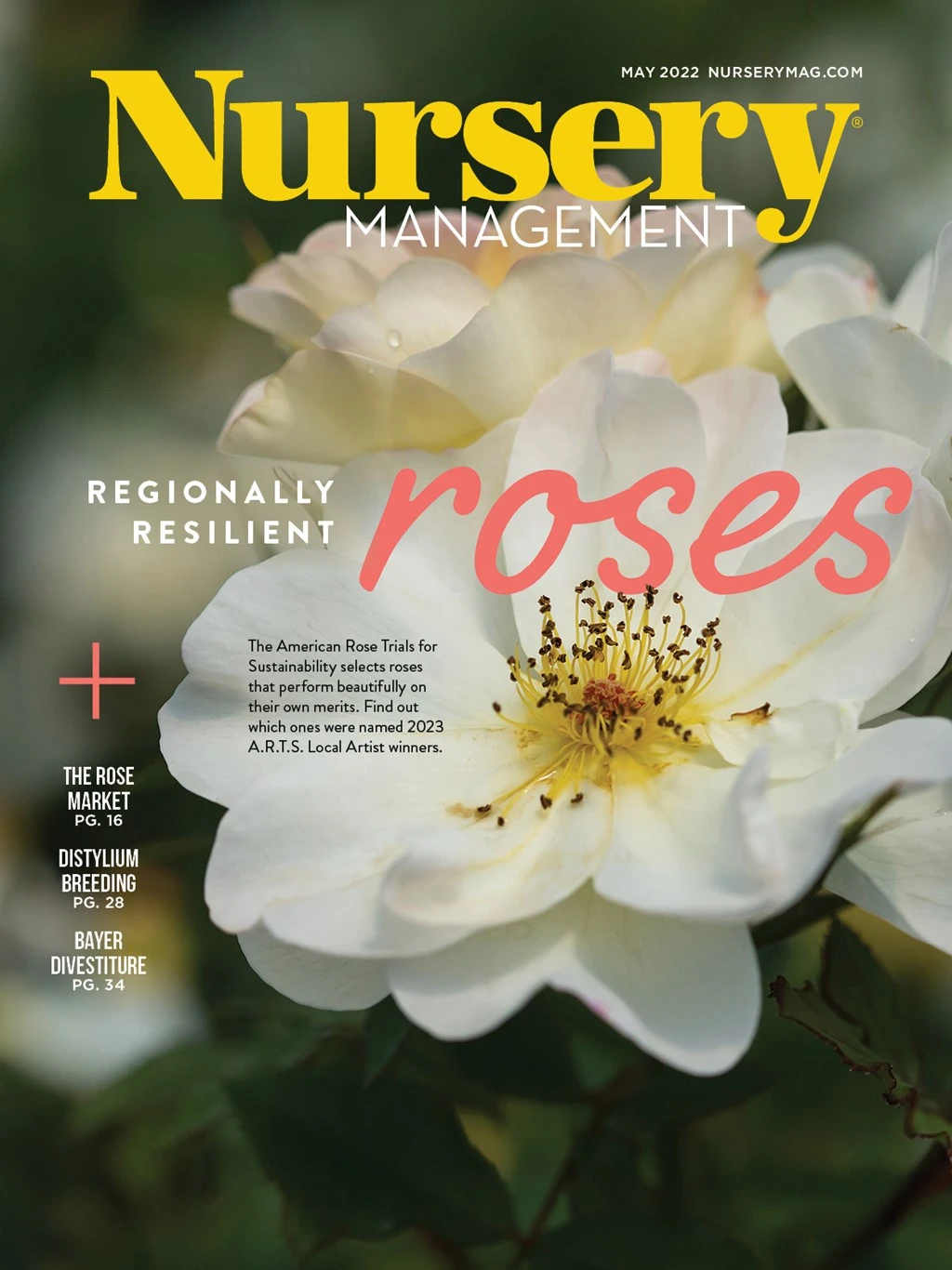

Susan Morgan aims to improve her clients’ quality of life through programmed horticultural activities. Her entire career had been in public horticulture where she became captivated by not only engaging people with plants, but introducing people to the restorative benefits of plants and the outdoors. Thanks to therapeutic horticulture, she’s able to be the direct facilitator of those connections between people and plants.
Nursery Management: What is horticultural therapy?
Susan Morgan: Horticultural therapy is the use of plants and garden related activities by a trained practitioner (like a horticultural therapist) to achieve specific goals as part of a treatment plan. Clients or patients are working on some kind of rehabilitation, such as physical or mental health improvement. This profession has gotten more awareness, particularly during Covid, and the term horticultural therapy has been become very popularized as people talk about their ‘garden therapy.’
I do more therapeutic horticulture, which is a bit less clinical, though my activities do provide physical, psychological, cognitive and social benefits. It looks different for different practitioners, depending on the groups and goals. My primary focus is working with older adults. Therapeutic horticulture activities also help reduce stress, lower blood pressure and anxiety, improve motor skills and provide social interaction opportunities.
NM: What are some of the activities you provide?
SM: I do both indoor and outdoor programming. I work with many people who are room-bound or homebound, so we do a lot of indoor activities. And for facilities that may not have garden space, indoor activities are necessary. Purists like to take people outside and work in the outdoor environment, but that’s not always obtainable. It’s important to be creative and be able to empower clients and engage them in these types of activities. Sometimes it’s hands-on planting or crafting, and sometimes it’s more of a sensory activity.
NM: When you got into this facet of the industry, what surprised you the most?
SM: The lack of awareness and understanding of therapeutic horticulture, but awareness has grown in the last few years. For instance, more people understand how horticultural therapy and therapeutic horticulture can complement other therapies, especially when the practitioners are working as a team.
NM: Can you give an example of how this has helped a client?
SM: This isn’t one of my clients, but I witnessed this during my studies in England. I visited Freedom from Torture (previously known as The Medical Foundation for the Care of Victims of Torture) where people go who have experienced the atrocities of war. One man had lost his wife and children back in his home country. For cultural reasons, he had a tough time relating to his female therapist. She started taking him to the garden just to sit on a bench for an hour and talk – not about his situation, but just regular conversation. Then their therapeutic relationship naturally happened with the help of being in the garden. She was able to use nature metaphors as they applied to life, and they decided to plant a tree in memory of his family.
With my own clients, I talk about the soil and preparation of soil, and how there’s something healing about cultivating and working with your hands in the soil. Whether it’s someone who’s incarcerated or living in a memory care facility, or any type of client, there’s this calm that comes over them. I can see it – they exhale and relax their shoulders, for instance.
But I have clients who are afraid to touch the soil, so to help, I provide tools or gloves, for example. Often, that person will eventually take the glove off or put the tool down and immerse their hands in the soil and there’s a shift in their mind that goes from scary to safe and grounding.
NM: What does your personal garden look like?
SM: Being new to Colorado and now gardening at 8,500 feet, I’m still learning. It’s been quite an experience, and I’ve had to adapt my aesthetic. Incorporating ‘Karl Foerster’ grass was my first success here in Colorado. I’ve also done well with globe mallow. During the pandemic, my husband helped me build a Hugelkultur garden in 60-foot raised beds.
NM: What’s on your music playlist?
SM: I like a mix of bluegrass and pop. I listen to artists ranging from Bruno Mars to The Beatles. And my elementary-aged children can sing every word to “American Pie.”
For more: thehorticulturallink.com

Explore the May 2022 Issue
Check out more from this issue and find your next story to read.
Latest from Nursery Management
- How impending tariffs and USDA layoffs impact the horticulture industry
- Shifting the urban environment
- These companies are utilizing plastic alternatives to reduce horticultural waste
- How to create a sustainable plant nursery
- Lamiastrum galeobdolon ‘Herman’s Pride’
- One of rarest plants on earth: Tahina spectabilis
- Leading Women of Horticulture: Angela Labrum, Bailey Nurseries
- Get to know Pat Reilly with NewGen Boxwood and the American Boxwood Society





